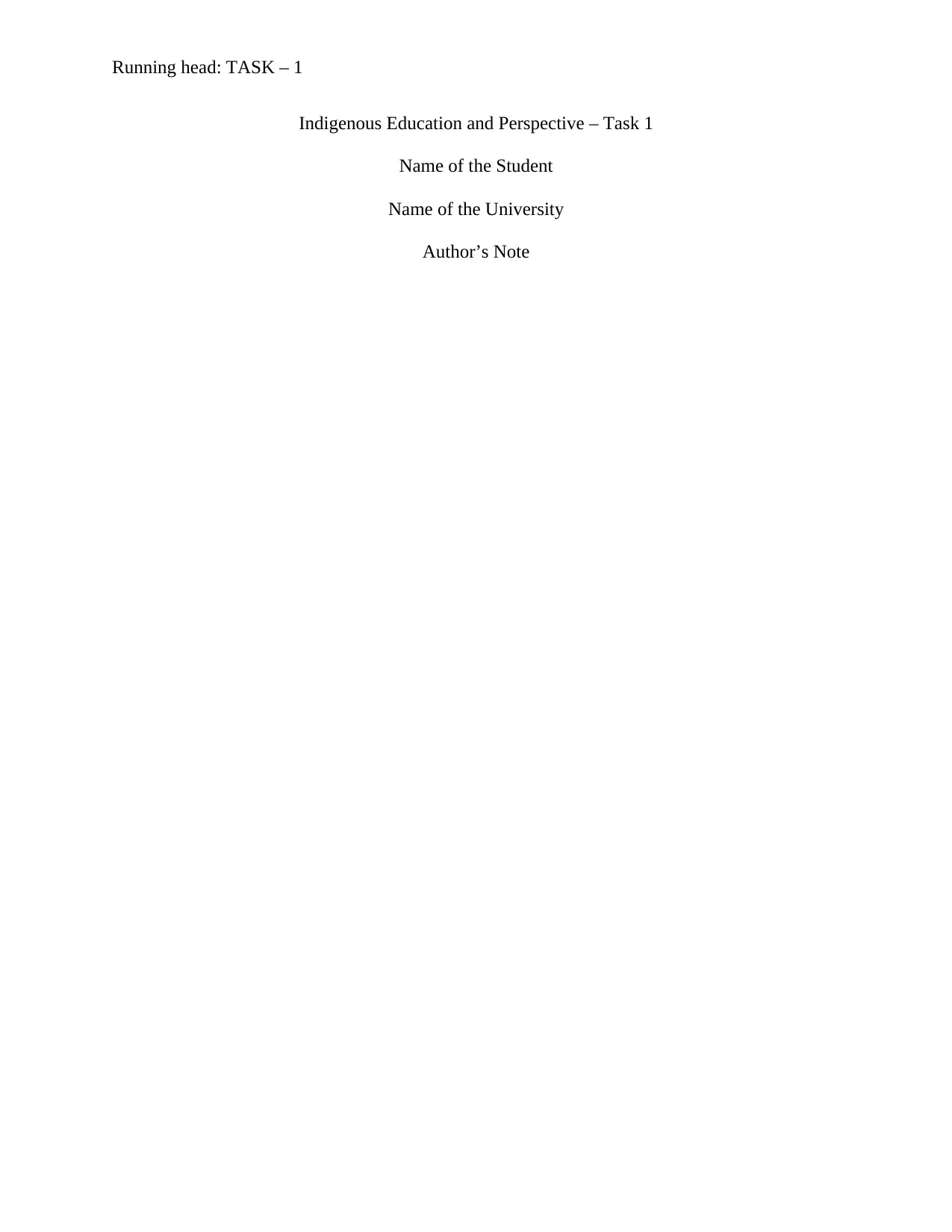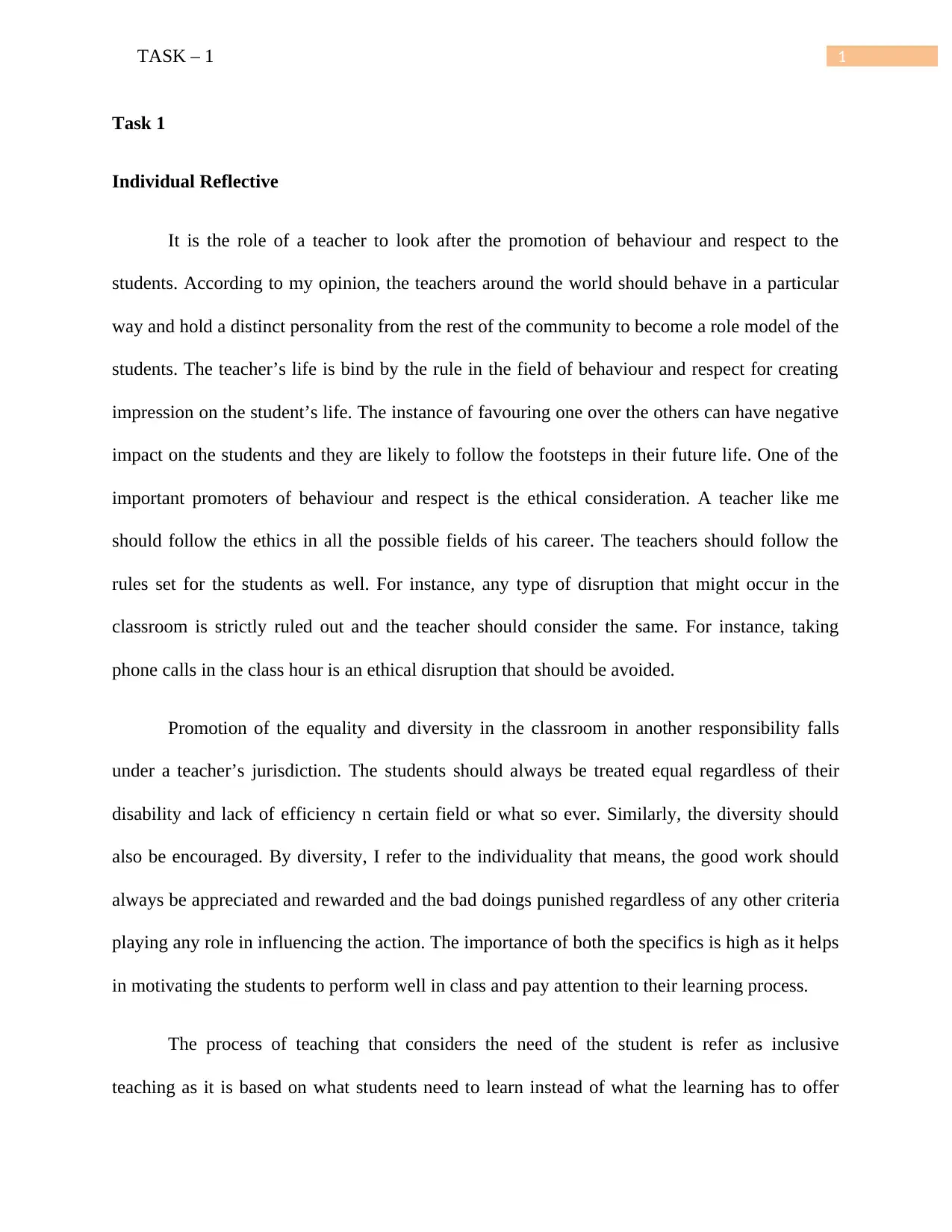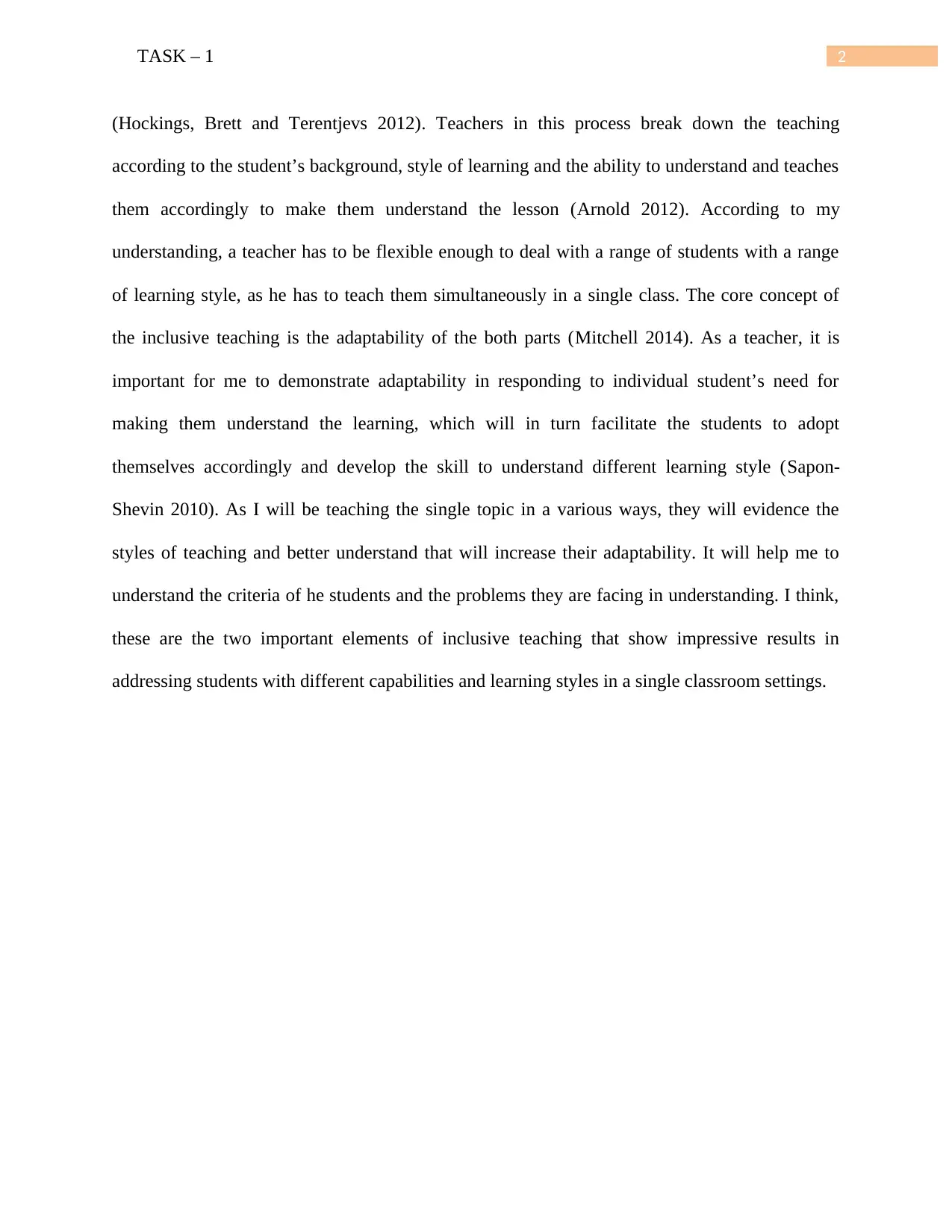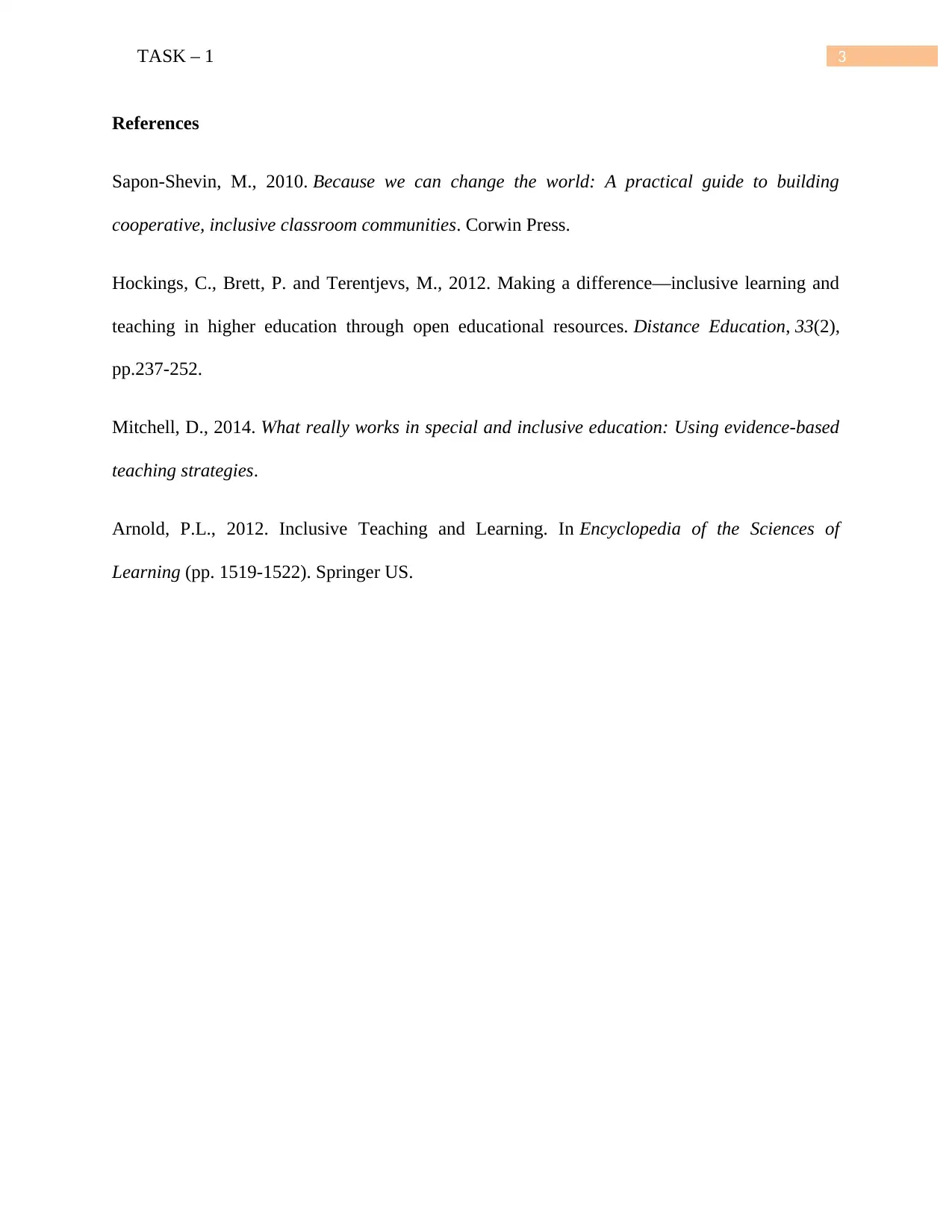Individual Reflective Task 1: Indigenous Education and Teaching
VerifiedAdded on 2020/03/16
|4
|734
|118
Homework Assignment
AI Summary
This assignment is a reflective essay, Task 1, focusing on Indigenous Education and the role of a teacher in promoting positive behavior and respect among students. The author emphasizes the importance of ethical considerations, equality, and diversity in the classroom, highlighting the need for teachers to be role models. The essay discusses inclusive teaching, which adapts to students' diverse learning styles and backgrounds to facilitate understanding. The author reflects on the need for flexibility to accommodate various learning styles and promote adaptability in students, supported by cited references on inclusive learning and teaching practices. The assignment underscores the significance of addressing students with different capabilities within a single classroom setting.
1 out of 4











![[object Object]](/_next/static/media/star-bottom.7253800d.svg)